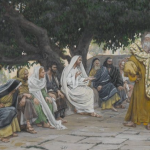Here’s something you didn’t know about the Incas:
Because the royal mummies were not considered dead, their successors obviously could not inherit their wealth. Each Inka’s panaqa retained all of his possessions forever, including his palaces, residences, and shrines; all of his remaining clothes, eating utensils, fingernail parings, and hair clippings; and the tribute from the land he had conquered. In consequence, as Pedro Pizarro realized, “the greater part of the people, treasure, expenses, and vices [in Tawantinsuyu] were under the control of the dead.” The mummies spoke through female mediums who represented the panaqa’s surviving courtiers or their descendants. With almost a dozen immortal emperors jostling for position, high-level Inka society was characterized by ramose political intrigue of a scale that would have delighted the Medici. Emblematically, Wayna Qhapaq could not construct his own villa on Awkaypata—his undead ancestors had used up all the available space. Inka society had a serious mummy problem.
Charles C. Mann — 1491: New Revelations of the Americas Before Columbus
1491 is a delightful book on the state of the Americas prior to the arrival of Columbus, based on the latest research and findings. There’s an awful lot here that I didn’t know. I’ll have more to say about it when I’ve finished it.











